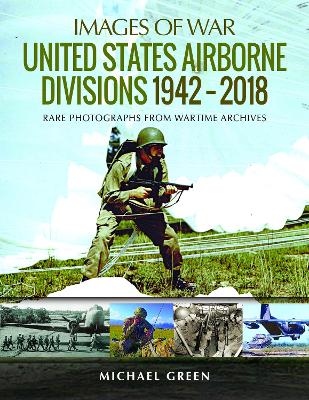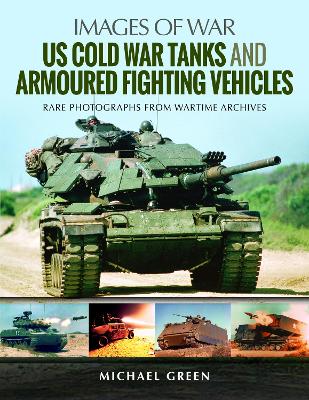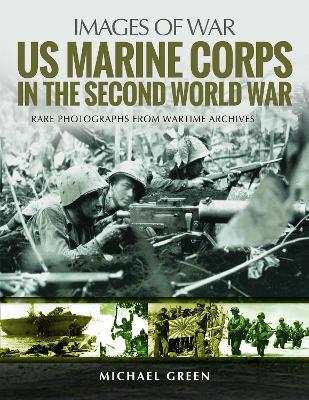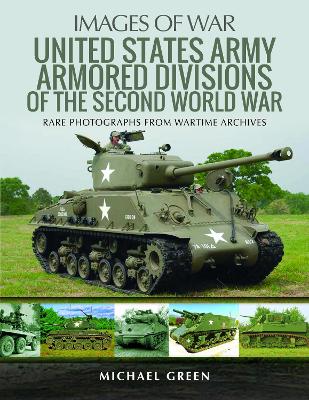Images of War
4 total works
In 1942 the 82nd and 101st Airborne Divisions were formed and three more followed. 17th and 92nd (All American Division) and 101st (Screaming Eagles) fought in Sicily, D-Day, MARKET GARDEN and the Rhine Crossing (VARSITY). The 11th served in the Far East. The 13th did not see combat.
Only the 82nd survived the post-war cull. The Screaming Eagles were reactivated in 1956 and both divisions served in Vietnam with the 101st becoming a helicopter delivered airmobile' division in 1968 before being re-designated an air assault' division in 1974.
As this superbly illustrated book describes, both 82nd and 101st earned their reputations as crack' divisions at the forefront of US operations and military interventions, be it Grenada (URGENT FURY), Panama (JUST CAUSE), the Gulf Wars and most recently Afghanistan (ENDURING FREEDOM).
Thanks to the Author's knowledge and research, this Images of War book gives the reader a full insight into the battles and the men and their equipment that have made these divisions the elite of the US Army.
Only the 82nd survived the post-war cull. The Screaming Eagles were reactivated in 1956 and both divisions served in Vietnam with the 101st becoming a helicopter delivered airmobile' division in 1968 before being re-designated an air assault' division in 1974.
As this superbly illustrated book describes, both 82nd and 101st earned their reputations as crack' divisions at the forefront of US operations and military interventions, be it Grenada (URGENT FURY), Panama (JUST CAUSE), the Gulf Wars and most recently Afghanistan (ENDURING FREEDOM).
Thanks to the Author's knowledge and research, this Images of War book gives the reader a full insight into the battles and the men and their equipment that have made these divisions the elite of the US Army.
To counter the Soviet threat and that of their client States during the Cold War years 1949-1991, the American military deployed an impressive range of main battle tanks (MBTs) and armoured fighting vehicles (AFVs).
The Patton series of medium MBTs (including the M46, M47 and M48) supplemented by the M103s Heavy Tank initially formed the core of the US tank fleet. In 1960 the M60 MBT with its British designed 105mm gun entered service and, in turn, was replaced by the M1 Abrams in 1980.
In support were armoured reconnaissance vehicles, progressively the M41 bull dog (1951); the M114 (1961), the M551 Sheridan (1967) and M3 Bradley Cavalry Fighting Vehicle (1981).
The armoured personnel carrier (APC) range included the ubiquitous M113 and its replacement the M2 Bradley, cousin of the M3.
Expert author Michael Green covers all these vehicles and their variants in this informative and superbly illustrated Images of War series work.
The Patton series of medium MBTs (including the M46, M47 and M48) supplemented by the M103s Heavy Tank initially formed the core of the US tank fleet. In 1960 the M60 MBT with its British designed 105mm gun entered service and, in turn, was replaced by the M1 Abrams in 1980.
In support were armoured reconnaissance vehicles, progressively the M41 bull dog (1951); the M114 (1961), the M551 Sheridan (1967) and M3 Bradley Cavalry Fighting Vehicle (1981).
The armoured personnel carrier (APC) range included the ubiquitous M113 and its replacement the M2 Bradley, cousin of the M3.
Expert author Michael Green covers all these vehicles and their variants in this informative and superbly illustrated Images of War series work.
United States Marine Corps played a leading role in the war against Japan from Pearl Harbour in December 1941 until VJ Day on 2 September 1945. Living up to its motto the First to Fight , the 1st Marine Division landed on the Japanese-occupied island of Guadalcanal in the South Pacific on August 7, 1942 and fought its way up the central Solomon islands to Cape Gloucester in the territory of New Guinea.
In November 1943, the Marine Corps captured Tarawa Atoll and so began their advance across the Central Pacific, fighting many famous and bloody battles such as Saipan, Tinian, Guam, Peleliu, Iwo Jima and finally the 82-day epic struggle for Okinawa. These victories came at high cost, with 19,737 Marines killed, and 67,207 wounded.
This classic Images of War title presents a graphic overview of the Corps' legendary campaign in text and contemporary images. The Author expertly describes the full range of Marine Corps weaponry and explains their organization, tactics and fighting doctrine.
In November 1943, the Marine Corps captured Tarawa Atoll and so began their advance across the Central Pacific, fighting many famous and bloody battles such as Saipan, Tinian, Guam, Peleliu, Iwo Jima and finally the 82-day epic struggle for Okinawa. These victories came at high cost, with 19,737 Marines killed, and 67,207 wounded.
This classic Images of War title presents a graphic overview of the Corps' legendary campaign in text and contemporary images. The Author expertly describes the full range of Marine Corps weaponry and explains their organization, tactics and fighting doctrine.
United States Army Armored Division of the Second World War
by Green, Michael
Published 15 October 2018
The routing of the British and French Armies in May and June 1940 by the Wehrmacht's armoured divisions caused a major rethink by the US Army's senior leadership. The result was the formation of the two armoured divisions in July 1940; the first named 'Old Ironside' and second designated 'Hell on Wheels'.
In 1941, a further three armoured divisions were created; the third (Spearhead), the fourth (remained unnamed) and the fifth called 'Victory'. The following year seven more were created, the sixth, seventh, eighth, ninth, tenth, eleventh and twelfth. The final two armoured divisions formed in 1943 numbered the sixteenth and twentieth. All but one of these powerful formations went on to see service in the European Theatre of Operation (ETO); the exception being the 1st Armoured Division that served in North Africa, Sicily and Italy.
These fourteen divisions proved their effectiveness against the Axis forces. In this carefully researched book military historian and much published author Michael Green explains their operational and fighting doctrine. Equipment enthusiasts will appreciate the lavish images and informed captions of the armoured fighting vehicles and other equipment employed.
In 1941, a further three armoured divisions were created; the third (Spearhead), the fourth (remained unnamed) and the fifth called 'Victory'. The following year seven more were created, the sixth, seventh, eighth, ninth, tenth, eleventh and twelfth. The final two armoured divisions formed in 1943 numbered the sixteenth and twentieth. All but one of these powerful formations went on to see service in the European Theatre of Operation (ETO); the exception being the 1st Armoured Division that served in North Africa, Sicily and Italy.
These fourteen divisions proved their effectiveness against the Axis forces. In this carefully researched book military historian and much published author Michael Green explains their operational and fighting doctrine. Equipment enthusiasts will appreciate the lavish images and informed captions of the armoured fighting vehicles and other equipment employed.



